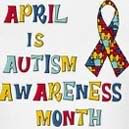What is an autism spectrum disorder?
Different people with autism can have very different symptoms. Health care providers think of autism as a “spectrum” disorder, a group of disorders with similar features. One person may have mild symptoms, while another may have serious symptoms. But they both have an autism spectrum disorder.
When individuals refer to the autism spectrum, they are referring to one of these five pervasive developmental disorders.
Autistic Disorder
Autistic disorder, sometimes called childhood autism or classic autism, is what most people think of when hearing the word autism. To receive a diagnosis of autistic disorder, symptoms must be present before the age of three years. Children usually have significant speech and language delays (if they are speaking at all), noticeable social deficits, apparent repetitive actions, and aren’t always well-connected with the world around them.
Childhood Disintegrative Disorder
Childhood disintegrative disorder is rare; it is marked by children who are on a typical developmental path for the first three years of life and then begin to experience regression. The level of regression varies between children but is usually in the significant range. The behaviors associated with childhood disintegrative disorder are similar to those of a person with autism. Childhood disintegrative disorder is more common among boys than girls.
Asperger’s Disorder
Unlike autistic disorder,
Asperger’s disorder is usually diagnosed in older children. It is not uncommon to have a child diagnosed as a teenager. People with Asperger’s disorder have a different type of language impairment.
They may have an expansive vocabulary but have difficulties with social language and social reciprocity. Individuals with Asperger’s disorder also commonly have rigid thought and behavior and an unusually intense focus on a narrow range of interests. Children with Asperger’s disorder are often called “little professors” due to their pedantic use of speech and language.
Pervasive Developmental Disorder Not Otherwise Specified (PDD-NOS)
PDD-NOS can be a confusing diagnostic term. Individuals who meet some of the criteria for autism or Asperger’s disorder, but not all, may be diagnosed with PDD-NOS. An example would be an individual with a language delay and social impairments but lacks stereotypical and repetitive behaviors. In this case, he would not meet the criteria for an autistic disorder diagnosis but definitely falls under the umbrella of pervasive developmental disorders.
Rett’s Disorder
Almost exclusively found in females, Rett’s disorder is similar to childhood disintegrative disorder in that it is preceded by apparently normal development. However, children with Rett’s disorder begin to experience regression much earlier; usually the regression begins around six months of age. Rett’s disorder is quite rare affecting fewer than four in 10,000.
It is important to understand that pervasive developmental disorders fall on a true spectrum. One person with a diagnosis of autistic disorder can present quite differently than another with the same diagnosis.

 If you have facebook there is an "Event" created to wear blue on April 2, 2010 to support Autism Awareness , here is the link:
If you have facebook there is an "Event" created to wear blue on April 2, 2010 to support Autism Awareness , here is the link:




